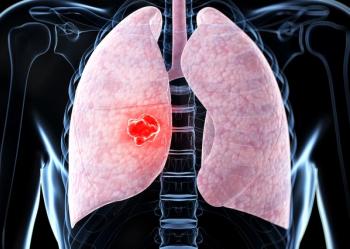
Role of ctDNA in Monitoring Treatment Response in NSCLC
An expert in thoracic oncology provides an overview of ctDNA and discusses what ctDNA testing results can indicate about a patient’s likelihood of responding to immunotherapy in NSCLC.
Episodes in this series

Kristie Kahl: Let’s focus on ctDNA [circulating tumor DNA]. Can you explain what that is?
Roy S. Herbst, MD, PhD: ctDNA is cell-free DNA. You’re looking at the DNA that’s floating in the plasma because the tumor cells die or undergo apoptosis, and the DNA gets released. Measuring the DNA at serial time points, in the course of a patient’s treatment, can give you a quantitative measurement of how they’re doing.
In fact, it’s the best tumor marker. You’re actually measuring tumor. This is a sophisticated technique. It’s becoming more sensitive. Normally, you would be looking at specific mutations as a way to identify that tumor DNA. There are 2 ways of doing it. You can use a test where you sequence the whole tumor to find the mutational profile, or you can just pick a series of mutations and do it without having to sequence the tumor. Both have pros and cons, but it’s being used more and more. There were some very nice studies done recently. There was a large program run by the Friends of Cancer Research, a think tank in Washington, DC, that does studies to raise the bar in how we monitor patients with cancer and treat them. Their research showed that the decrease in ctDNA in patients receiving immunotherapy with lung cancer correlated with a response and survival. This is becoming a more valid endpoint for future use.
Kristie Kahl: What do things like baseline ctDNA levels above or below median or clearance of ctDNA tell us? What are they telling us about a patient’s likelihood of responding to immunotherapy, especially in these clinical trials?
Roy S. Herbst, MD, PhD: If you see the ctDNA going down, it tells you the patient is most likely responding. It’s a pretty good bet if you see the ctDNA decreasing. It’s a positive sign. If I had that, it also tells me if it’s stabilized, for example. Maybe we’ve done enough. Maybe we’re not seeing any change and we’d stop our therapy. These are all questions that have to be asked. I suggest that you include a ctDNA measurement whenever you get an x-ray measurement as a way to validate those surrogate markers.
Kristie Kahl: With that recommendation, how might ctDNA be used to monitor patients with non–small cell lung cancer? For example, like true vs pseudoprogression or early detection of progression happening?
Roy S. Herbst, MD, PhD: All of the above. In pseudoprogression, you wouldn’t see ctDNA going up. In progression, you would. If you saw a tumor that looked bigger, but ctDNA was stable, that’s telling you it’s probably a pseudoprogression or an inflammation. Minimal residual disease is another amazing thing that we’re doing. In fact, why treat patients with adjuvant therapy after surgery, after chemotherapy or radiation, if they don’t need it? You can identify patients. For example, the recent data with atezolizumab from IMpower010, which show patients with stage II and III disease and PD-L1 greater than 1% receiving atezolizumab as adjuvant therapy after surgery. There was an improvement in disease-free survival that tells you that these drugs work in that adjuvant setting. Imagine if you could predict only those patients who had significant ctDNA postsurgery. Maybe some wouldn’t have to be treated. That definitely makes sense.
Kristie Kahl: What assays are available to test ctDNA? Have you had experience using any of them?
Roy S. Herbst, MD, PhD: We have not. We do this in the research labs at Yale [Cancer Center]. There are tests that can look at this as the garden tests. Foundation Medicine has a test, as do other companies. Most of those are looking at mutational profiles, but I believe they can also look at quantitative amounts of DNA and correlate that with outcome.
Transcript Edited for Clarity
Newsletter
Stay up to date on recent advances in the multidisciplinary approach to cancer.




















































































